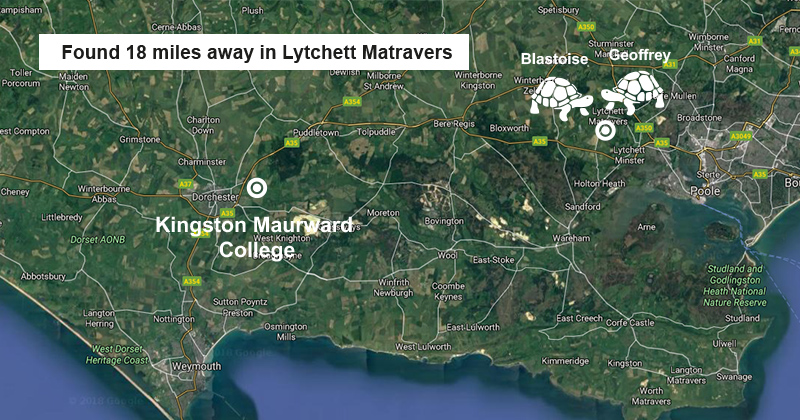It’s been a good two weeks for employer providers, as two have received ‘good’ ratings following their first ever inspections.
The picture for independent learning providers is less positive, with both full inspection reports published in the last two weeks resulting in ‘inadequate’ verdicts.
Senior leaders and managers at Nissan Motor Manufacturing (UK) Limited have a “very good understanding of the strengths and weaknesses” of its provision, according to a report published August 13 and based on an inspection in late June.
Its offers apprenticeship training to its own staff, which inspectors rated ‘outstanding’.
Apprentices “successfully develop the high-level skills they need to work for a global vehicle manufacturer”, and “almost all” finish their training on time and “gain sustainable employment and advancement in their careers with Nissan”.
However, Nissan’s adult learning provision – which it offers to local residents – was found to be requiring improvement.
“Too many” adult learners failed to gain their qualifications, and they also “do not improve their English and mathematical skills well enough”.
Meanwhile, leaders and managers at United Utilities Water Limited’s “unwavering” commitment to offering high-quality apprenticeship provision was praised in a report published August 23 and based on an inspection at the beginning of the month.
Their “significant investment” in the training facilities meant apprentices had “exceptional facilities and resources that prepare them for a career in the water- and wastewater-treatment industry”.
Most apprentices at the company “make good progress” and “develop substantial new knowledge, skills and behaviours”, while “almost all” finish their courses on time.
However, the “most able apprentices” were not “challenged to produce work of a very high standard and achieve the grades of which they are capable”, the report said.
“Significant difficulties” with management turnover at West Anglia Training Association, had led to a “high turnover among trainers and assessors”, according to a report published August 18 and based on an inspection in late June.
The slow recruitment of “appropriate staff” had led to “reputational damage” for the provider, leaving the remaining staff without “sufficient time at their disposal to enable apprentices to make good progress”.
Apprentices had a “poor learning experience”, inspectors noted, and “over time, too many apprentices have not achieved their qualifications and too few have achieved within the time allocated to them”.
Trustees at WATA, a group training association previously rated ‘requirements improvement’ were criticised for their narrow focus on “the financial sustainability of the organisation” and for failing to “hold leaders and managers to account for low outcomes over time”.
Northern Construction Training and Regeneration was rated ‘inadequate’ overall but ‘good’ for its apprenticeships provision following its first inspection, carried out mid-July, in a report published August 22.
Leaders at the provider, which offers loans-funded courses for adult learners and apprenticeships, were criticised for failing to “maintain sufficient oversight of the adult learning provision”.
However, the provider’s construction apprenticeship programme was found to be “managed well” and apprentices “make good progress”.
In addition to these four full inspection reports, a massive 12 monitoring visit reports have been published in the past two weeks.
These are reports into visits carried out to new apprenticeship providers, to monitor their progress.
One of these, the National Logistics Academy Ltd, was found to be making ‘significant progress’ in all three themes under review.
Senior leaders at the provider have a “clear and purposeful strategic ambition to be the leading provider of high-quality training for the logistics industry,” according to the report, published August 15 and based on a visit in July.
A further three providers made significant progress in at least one theme – NA College Trust, Halifax Opportunities Trust and Corndel Limited.
However, at the other end of the spectrum, two providers were found to be making inadequate progress in at least one area – the Education and Skills Partnership Limited, and N-Gaged Training and Recruitment Ltd.
The remaining six all made reasonable progress in all three areas: University Hospitals of Leicester NHS Trust, Utilities Academy Limited; Lancashire Teaching Hospitals NHS Foundation Trust; plus employer providers Nuffield Health, Rentokil Initial (1986) Ltd, and Moy Park Limited.
Two providers held onto their grade two following short inspections this fortnight: Eden Training Solutions Ltd and Health Education England.
| Independent Learning Providers | Inspected | Published | Grade | Previous grade |
| West Anglia Training Association Ltd | 26/06/2018 | 18/08/2018 | 4 | 3 |
| Northern Construction Training and Regeneration | 10/07/2018 | 22/08/2018 | 4 | – |
| NA College Trust | 12/07/2018 | 16/08/2018 | M | M |
| The Education and Skills Partnership Limited | 17/07/2018 | 16/08/2018 | M | M |
| The National Logistics Academy Ltd | 10/07/2018 | 15/08/2018 | M | M |
| University Hospitals of Leicester NHS Trust | 18/07/2018 | 15/08/2018 | M | M |
| Halifax Opportunities Trust | 19/07/2018 | 14/08/2018 | M | M |
| Corndel Limited | 11/07/2018 | 18/08/2018 | M | M |
| N-Gaged Training and Recruitment Limited | 01/08/2018 | 22/08/2018 | M | M |
| Utilities Academy Limited | 17/07/2018 | 22/08/2018 | M | M |
| Lancashire Teaching Hospitals NHS Foundation Trust | 01/08/2018 | 24/08/2018 | M | M |
| Employer providers | Inspected | Published | Grade | Previous grade |
| Nissan Motor Manufacturing (UK) Limited | 19/06/2018 | 13/08/2018 | 2 | – |
| United Utilities Water Limited | 01/08/2018 | 23/08/2018 | 2 | – |
| Nuffield Health | 25/07/2018 | 16/08/2018 | M | M |
| Rentokil Initial (1896) Ltd | 17/07/2018 | 13/08/2018 | M | M |
| Moy Park Limited | 01/08/2018 | 21/08/2018 | M | M |
| Short inspections (remains grade 2) | Inspected | Published |
| Eden Training Solutions Ltd | 25/07/2018 | 15/08/2018 |
| Health Education England | 04/07/2018 | 13/08/2018 |







